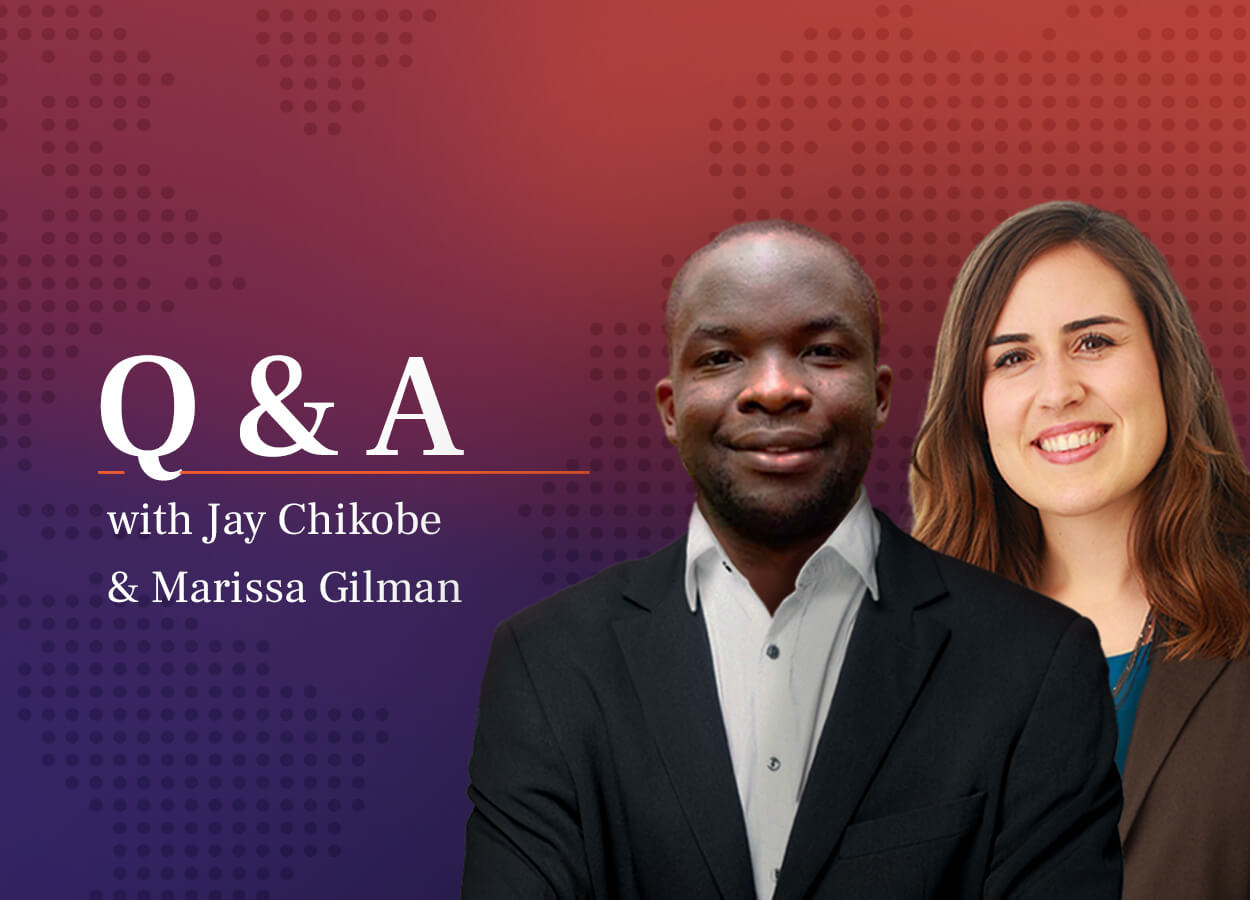From digital diabetes apps to pharmacies in gas stations, new health innovations are helping patients gain access to healthcare where and when they need it. Nowhere is this more true than in emerging markets, where innovators recognize an opportunity—and global health organizations must adapt rapidly—to provide better care to patients who have historically had limited access to healthcare options. Patients’ enthusiasm, pocketbooks, and the enabling power of technology are creating a pathway for sustainable, market-based healthcare transformation in dozens of countries around the globe.
Resonance launched its Inclusive Innovation Exchange (IIE) to explore how healthcare innovators are rethinking patient care and market access in emerging markets. (We define “inclusive innovation” as the process of collaboratively creating novel goods, services, and systems with and for traditionally underserved or underrepresented populations.) IIE hosts Marissa Gilman and Jay Chikobe have spoken with more than a dozen world-class problem solvers, from large companies and foundations to promising startups and social enterprises. They have uncovered practical lessons for inclusive innovation for global health, as well as trends in the rapidly-shifting global healthcare ecosystem. Below, we asked Marissa and Jay to share some of their insights from these conversations.
Q&A with Marissa Gilman and Jay Chikobe
Q. Resonance launched the Inclusive Innovation Exchange series to share insights from some of the world’s most impactful global health innovators. What do these problem solvers have in common?
Jay: We all benefit from uniform, global standards for healthcare delivery, but you can’t apply these standards in a uniform way across countries and continents. The healthcare ecosystems in emerging markets are incredibly complex. The guests in our series are continuously finding inclusive and innovative ways to solve for that complexity.
Marissa: They’re also trying to find a better way to improve health access and outcomes. Companies like Novaratis and Medtronic are connecting with local players because they’ve seen that it doesn’t work when you try to deliver healthcare from the top-down in these complex environments. Healthcare is a very intimate, culturally nuanced service, from how you deliver care to how you treat the body. Companies have to balance revenue generation and community and cultural impact. To strike that balance successfully, organizations must deeply understand their local operating environment and collaborate across the ecosystem.
Q. After seven episodes, what struck or surprised you?
Jay: That companies are still trying to figure out the how. Novartis went to a startup like mPharma to say, let’s work together to improve access to medicines in Ghana. You’d think a corporation of their size would have the internal resources to do that themselves. But they recognized that even if they do have the resources and knowhow, there was value in a partnership with a startup that understood the local context better than they did. Large companies still need partners and partnerships to be successful.
Marissa: It’s also been surprising that everyone globally is still figuring out the fundamentals of healthcare delivery and how to fund it in a sustainable way. What we’re seeing—and mPharma is a perfect example—is that local players are coming up with really great ways to solve both of those things to increase access to care. It’s quite inspiring, and it’s something that companies should take note of.
Q. What insights will you carry forward as you continue to push for inclusive innovation for health?
Marissa: One challenge is that it’s hard to connect and engage within health ecosystems. As Jay mentioned, global health is complex. There are a variety of players spanning global to local organizations who may not engage or interact directly. This breakdown makes it challenging for international organizations to successfully innovate, collaborate, and scale. We’re seeing that the game-changing organizations are the ones that leverage both local and global partnerships to design really innovative, sustainable solutions to health challenges.
Jay: In the last few episodes, we’ll be focusing on open innovation—or the process of crowdsourcing innovative ideas—as an enabler to inclusive innovation. Open innovation is a way to actually, meaningfully do it well. We’ll also explore how to bring big pharmaceuticals together to solve problems through pre-competitive partnerships.
Q. What three things would you tell companies interested in advancing healthcare access in emerging markets?
Marissa: If you’re a global organization, make sure you understand the local context and are partnering with local players to design your solution and to launch it. If you’re a local organization, think about when and how to engage global partners. Take a systems approach: Start by thinking through the web of interactions you expect your potential health intervention to have. Then use that to map the local or global collaborators best suited to help you refine your service or product and ensure a successful design and launch.
Jay: Beyond that: Relentlessly pursue value for the end user. You can leverage lean startup or human-centered design, or any of those frameworks, but solve for a human first. And then assess the ecosystem. And from our design episode: Don’t innovate for innovation’s sake. Innovation is not the end product. Better patient care is.
Q. What do you see as key trends to watch for health solutions in emerging markets?
Marissa: There’s a shift underway from patient to consumer within the emerging market landscape. As markets develop, patients are starting to have more choices. It shifts the way that health organizations approach patients, making them more patient-centered. We’re also seeing some really cool applications of technology that increase access and equity, and that trend will only continue to grow. Finally, we’re witnessing a transformation in care for non-communicable diseases (NCDs). There is growing interest from foundations and corporations in moving the needle on hypertension, diabetes, and other chronic, lifelong diseases that haven’t historically received as much attention as infectious diseases.
Jay: This spotlight on NCDs requires a closer relationship between provider, institution, and patient, and digital technology is the catalyst underpinning that relationship. You can receive care through a cell phone app. This shift is making healthcare in emerging markets more affordable and accessible.



